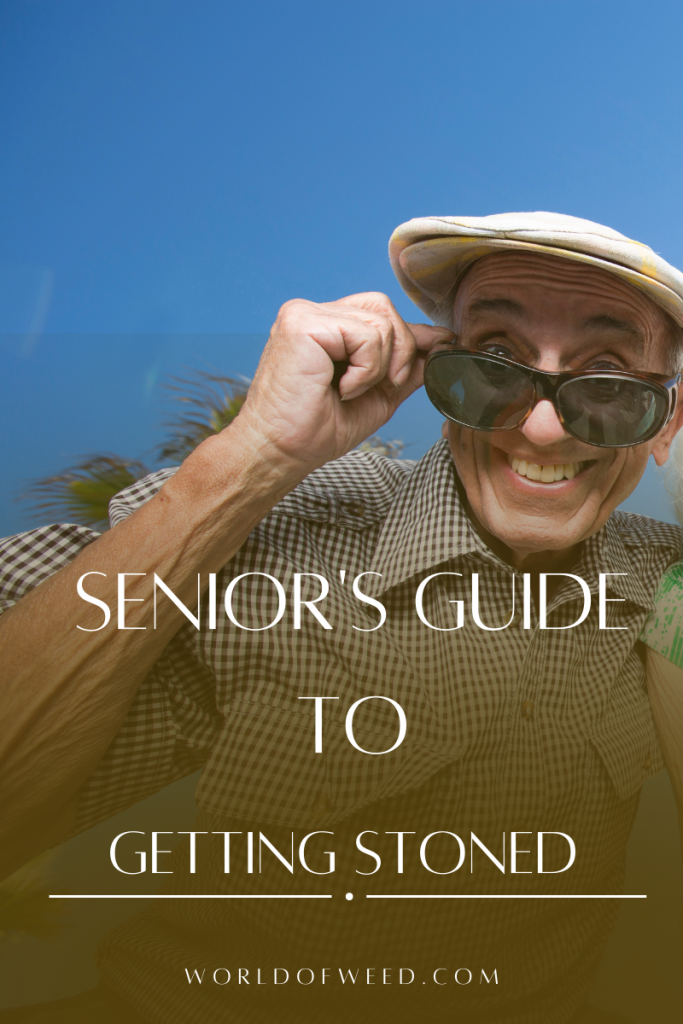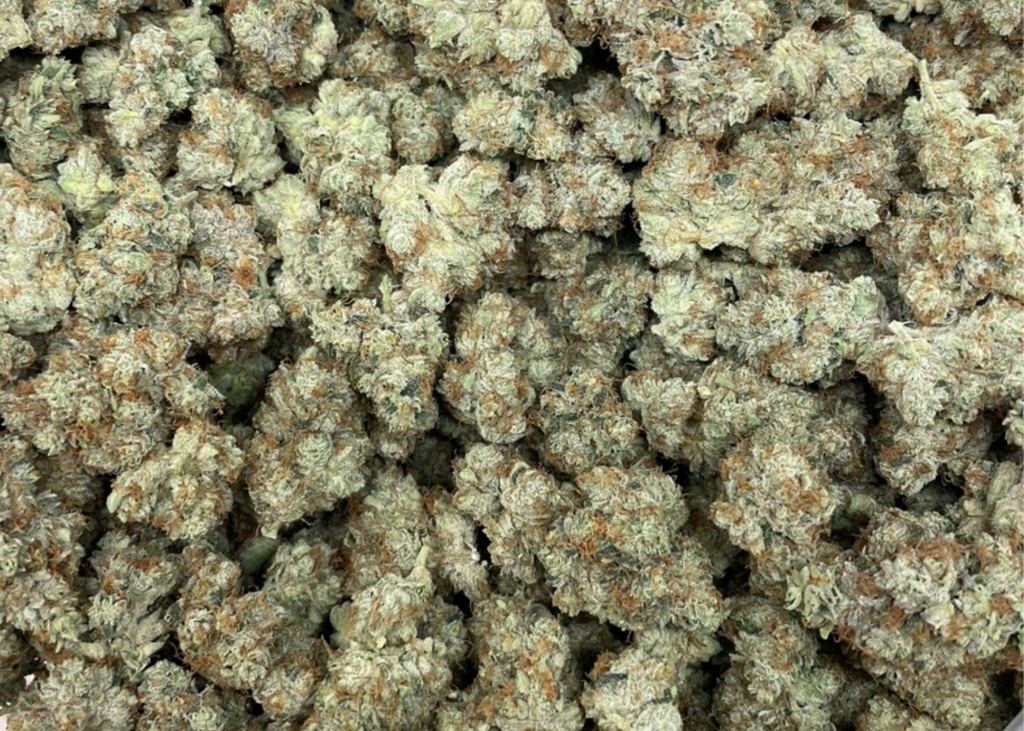As an older adult, you likely have a bit of a complicated relationship with cannabis.
The therapeutic use of cannabis is a pivotal development, one that provides many elderly individuals with a viable option in lieu of traditional pharmaceuticals and the oftentimes nasty side effects that accompany them, as a natural supplement to traditional treatment methods, or simply as a non-dangerous way to boost your mood and elevate your perception of life.
The influx of cannabis research, and the subsequent spread of cannabis legalization, have fueled the anecdotal claims of cannabis being a powerful pain-reliever, mood enhancer, appetite stimulant, and more.
Yet, despite the long list of beneficial effects of cannabis consumption, many of those born in earlier generations are still hesitant to start adding bong rips to their daily routine, due largely in part to the stigma that still shrouds cannabis and cannabis use. This is rather unfortunate, though it is indeed understandable. For many older adults, childhood and teen years were spent in the midst the of “war on drugs” and “reefer madness” propaganda.
While we now know that old anti-cannabis rhetoric is mostly false, that doesn’t negate the impact it has had on many of those still hesitant about this mysterious plant. This influence isn’t something easily dismissed, and it continues to make some seniors shy away from giving cannabis a chance to alleviate ailments, unpleasant symptoms, and improve their mood.
Nonetheless, the age of seniors turning to the green has started to pick up momentum. The number of seniors getting stoned or using cannabis for therapeutic benefit has grown substantially over time, thanks to the stigma surrounding cannabis gradually decreasing and the societal normalization of cannabis use.
The fact of the matter is, different people try different things at different times during the course of their lives. And, if you’ve always been curious about weed, but haven’t yet worked up the courage to give it a try until you’re 55, then that’s perfectly okay.
And, surely it would be helpful to know if the same college advice about weed still applies to your more experienced physique.
If you’re an older adult hesitant about trying cannabis or have a senior loved one you feel would benefit from cannabis use, then this senior’s guide to getting stoned is for you.
We’ve broken down everything you need to know about using cannabis as a senior, including tips for seniors getting stoned for the first time – or the first time in a long time.

The Senior’s Guide to Recreational Cannabis Use
The Difference Between THC and CBD for Seniors
Cannabis naturally contains chemical compounds called cannabinoids, which is helpful to know if you’re considering marijuana for its ability to reduce pain and mitigate mental health concerns. When these cannabinoids interact with correlating cannabinoid receptors located in the body’s endocannabinoid system, they are able to produce effects similar to those of some painkillers, alleviating pain, or to those of antidepressants, promoting an elevated mood.
THC is the psychoactive compound that makes cannabis so popular (it is what gives weed its “high” or “stoned” effects), whereas CBD, the non-psychoactive cousin to THC, has been shown to reduce musculoskeletal inflammation – frequently the underlying cause of pain in older adults.
Even though THC and CBD can be consumed individually, they can also be combined. Ratios of THC: CBD are quite common in cannabis products, and they’re present for two reasons. First, CBD can counteract some of the effects of THC. Second, both THC and CBD have been proven to work synergistically with one another, providing the user with beneficial effects and more significant relief.
In a nutshell: Taking THC products will get you high and can alleviate some symptoms and issues. Taking CBD products will not get you high, yet can still alleviate some symptoms and issues.
Is Sativa or Indica Better for Seniors Getting Stoned?
There are two main types of cannabis strains, sativa and indica, which we’ll outline the benefits of below. There are also hybrid cannabis strains, which are essentially a combination of both types.
Sativa Strains for Seniors Getting Stoned
Sativa is best known for providing mental and physical energy, and therefore is best reserved for daytime use when you want to concentrate and get things done. If you find you’re having trouble having enough energy to do things around the house, such as the laundry and the cleaning, then you may find a sativa gives you that pep-in-your-step motivation. Additionally, sativa strains also enhance creativity and may help you find mundane and tedious tasks to be more enjoyable.
Sativa strains also stimulate appetite and aid in reducing nausea, which is great for individuals suffering from the effects of chemotherapy and other harsh medications. Sativa strains also alleviate headaches, in addition to helping with irritated throats.
The high from a sativa strain is more of a cerebral “head high”, rather than a physical “body high”, and therefore isn’t generally adequate for mitigating pain and aches felt throughout the body. It can uplift your mood, however, making it an ideal type of cannabis for older adults living with depression stemming from chronic pain or illness — expect increased laughter, social activity, talkativeness, and enhanced visual and audio perception.
Sativa strains are the type that make things funny and have you pondering random stoner thoughts about aliens and the decided upon order of the alphabet.
Indica Strains for Seniors
Indica cannabis strains are most known for promoting relaxation. Unlike their sativa counterparts, which boost energy, indica strains are best reserved for nighttime use because they tend to create a drowsy or sedating effect. For older adults fighting insomnia every night and who would prefer a natural sleep remedy as opposed to a synthetic medication, we suggest that you consume indica strains instead of sativa strains.
Indica cannabis strains pack a more powerful body high than sativa cannabis strains, and are therefore much more helpful in combating pain and muscle inflammation – especially for older adults suffering from cancer, MS, arthritis, and other illnesses. Additionally, those older individuals recovering from surgery may also find that smoking or otherwise consuming indica cannabis strains greatly reduces their nausea and pain while increasing their appetite, ultimately preventing the concern of weight loss and consequent fragility.
How to Use Cannabis Without Inhaling
You’re not alone if you’re an older adult who’s not all that enthused about putting smoke in your lungs. Health concerns are quite an understandable issue for many older adults – regardless of what is being smoked. This is especially true for those who are experiencing cardiovascular and/or breathing problems, which make smoking anything seem like a less-than-great idea.
So, what are you to do if you’re a senior getting stoned, or trying to be?
The notion that cannabis must be inhaled in order to get you high is another common misconception that has been around for decades. In all actuality, inhalation is far from the only way to consume cannabis and get stoned.
There are:
Cannabis Tinctures
Cannabis tinctures are oral solutions infused with cannabis extract. Most often produced with MCT oil as the base, cannabis tinctures allow easy and accurate dosing for your preference and needs. They can be taken sublingually under the tongue, where the cannabinoids absorb directly and rapidly into your sublingual veins and the surrounding mucosa, and then swallowed, or can be added to high-fat foods such as peanut butter or butter-rich cookies.
When using cannabis tinctures as part of a daily routine, it’s recommended to start with low doses and increase after a period of time. The onset effects of orally consumed cannabis are often unpredictable, taking anywhere from 30 minutes to 2 hours to produce effects, and giving a much more potent experience and high than you would get if you inhaled the cannabis.
Try starting cannabis tinctures with a 2.5mg THC dose and wait to determine how that makes you feel. Then, titrate (add more to the next dose) if you feel you want / can handle more.
Cannabis Edibles
Cannabis edibles are another very popular way to get stoned. This versatile method comes in a virtually endless list of forms. Some of the most common edibles are gummy candy, baked goods, chocolate, and beverages.
Much like with cannabis tinctures, you will need to pay attention to your dosing, because edibles take longer until you start to feel the effects. This can result in some older adults trying to increase their dose before they’ve even given the first one adequate time to kick in. And, there is such a thing as getting too high – but don’t fret as there are ways to stop being high from weed.
Cannabis Topicals
Cannabis topicals won’t get you stoned, but they are one of the best ways for older adults to use cannabis for therapeutic benefits. Topicals are an ideal solution for localized pain relief and provide no psychoactive effects. The reason for this is cannabinoids are fat-soluble, meaning they will be absorbed into the upper layers of the skin, where they interact with the endocannabinoid system and provide relief to the applied area without ever touching the bloodstream.
All you have to do is massage the cannabis topical into the skin where the pain is, as often as needed.
The Potential Downsides for Seniors Getting Stoned
Just as with anything else, cannabis is not without its potential downsides. As such, before starting any sort of daily cannabis routine – or even just getting super stoned with your grandson – make sure you’ve properly assessed the risks with your healthcare provider.
While marijuana does have far fewer potential adverse effects than other age-related substances out there, they can still pop up, the most common of them being anxiety and dry eyes/mouth.
If you have been diagnosed with a mental illness, make sure your doctor is aware of this before you start becoming a midnight toker. This goes for older adults and all other cannabis consumers.
As an older adult, do be aware that cannabis can potentially bring an increased risk of falling. Falls are much more prevalent and dangerous than they used to be in the younger years, and can sometimes lead to dire injury. Weight issues are another downside for older adults using cannabis, as weed stimulates the appetite and brings on the munchies that are insatiable for some.

A Guide for Seniors Getting Stoned for the First Time
Whether you’re an older adult wanting to get stoned for the first time or are considering using cannabis for therapeutic benefit, there are some things to keep in mind:
Research the Ideal Cannabis Consumption Method for Seniors Getting Stoned
As we touched on above, there are so many ways to get stoned these days. From smoking and vaping to consuming edibles and tinctures, the choices form a long list. Just know you likely want to steer clear of the profoundly potent cannabis products, such as concentrates or “dabs”, which are best left to the younger, experienced stoners who want to reach the moon without leaving their couch.
Start Low, Go Slow
Older adults typically have a more sensitive physiological makeup, meaning that consuming any amount of THC is going to hit you faster and harder than it would younger individuals. Always start low and go slow during your first few experiments with cannabis, regardless of your consumption method.
If you do end up getting uncomfortably stoned, there are some things to do if you get too high that will bring you back down to Earth.
Set Up Your Environment for Seniors Getting Stoned
When you’re a senior getting stoned for the first time, it’s also important to set the right environment to ensure you not only have a fun time, but that you have a safe time as well.
It’s recommended that you get stoned at home, preferably in the company of a close friend or a family member – ideally one who has weed experience. Heck, this is a great time to call up your grandkids and invite them over for a smoke sesh!
Especially if you’re a grandpa having a stoner Father’s Day with the grandkids.
Additionally, make sure you don’t have anything else of importance on the schedule for that day. Don’t drive or operate any heavy or bladed machinery. It should be a day for relaxing – it’s even better to consume right before you head to bed.
Stay Hydrated
Even though ripping the bong isn’t going to be as dehydrating as drinking would be, it can still leave you feeling parched and fighting a dry mouth or “cotton mouth” that is decidedly unpleasant. Be sure to have water handy and sip it frequently as you get stoned. Water will also help ensure you stay grounded if you get to high, and can keep the anxiety from rearing its ugly head.
Have CBD Close By
Just in the event that you do end up getting too high from consuming weed, have CBD close by. Anxiety, paranoia, and heart palpitations are very common among older adults getting stoned for the first time, especially for those already prone to these issues.
CBD capsules, tinctures, or CBD edibles are the perfect way to counteract these negative effects.
Don’t Forget the Snacks!
Many seniors getting stoned enjoy the rise in appetite. Loss of hunger is common among older adults, but obviously, food is important for nutrition and physical wellness. As an older adult getting stoned, expect an increase in appetite by getting healthy snacks ready ahead of time that you can munch on as smoke up.
Get the “Okay” From Your Doctor First
Finally, check with your doctor ahead of time to make sure it’s safe for you to be a senior getting stoned. Your healthcare practitioner should be knowledgeable of the medications you take and aware of any possible adverse interactions between them and cannabis.
Both THC and CBD have been known to have a negative interaction with certain medications, resulting in their ineffectiveness over a period of time. These medications include many of those taken by an older adult, such as blood-thinners, pain medications, anticonvulsants, anti-anxiety medications, and sleep medications.
Curious Senior Getting Stoned?
Stay Lifted and Informed With World of Weed
Regardless of how old you are, cannabis is a versatile supplement that helps ease the pain of the aging process and makes it a lot easier for many older individuals. Whether your doctor has prescribed cannabis for therapeutic use or you simply want to see what getting stoned is all about, preparation and understanding are paramount for a blissfully fun time instead of one that leaves you regretting everything about this decision.
If you have an interest in being a senior getting stoned and reaping the benefits of cannabis, make sure to stay informed with World of Weed.
Visit the rest of our blog to remain updated on all the recent Tacoma cannabis news and products as they come out.
If you’re completely new to the world of weed (see what we did there?), then be sure to check out our Beginner’s Guide to Marijuana and our walk-through on choosing topshelf weed.
Interested in shopping at World of Weed? You can get things going by checking out our menu online to find something that stands out to you or just come on in and speak to one of our budtenders.
Disclaimer: Marijuana has intoxicating effects and may be habit-forming. Smoking is hazardous to your health. There may be health risks associated with consumption of Marijuana. Marijuana, in any form, should not be used by individuals that are pregnant or breastfeeding. Marijuana is intended for use only by adults 21 and older. Keep out of reach of children. Marijuana can impair concentration, coordination, and judgment. Do not operate a vehicle or machinery under the influence of this drug. This product may be unlawful outside of Washington State.








